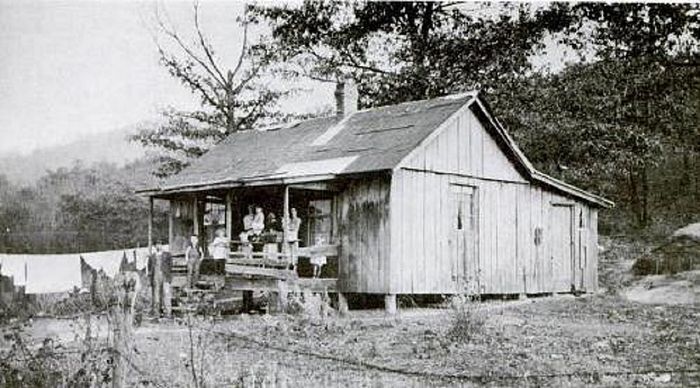Why early Appalachian settelrs celebrated Christmas in January
 Ask any of the millions of children scattered throughout the Appalachian Mountains what day of the year Christmas is on and you will undoubtedly hear, “December 25th”. Everyone from Northern Alabama to the Katahdin Summit in Maine knows that it is on this date that Santa Claus comes to town.
Ask any of the millions of children scattered throughout the Appalachian Mountains what day of the year Christmas is on and you will undoubtedly hear, “December 25th”. Everyone from Northern Alabama to the Katahdin Summit in Maine knows that it is on this date that Santa Claus comes to town.
Interestingly, if you had been roaming the Appalachian hillsides only a few centuries ago, the answer to this same question would have produced a far different date — January 7th.
To understand why the early inhabitants of Appalachia celebrated Christmas two weeks after December 25th, we must first jump back in time nearly a half-century before the birth of Christ and visit the Roman Empire.
In the year 46 BC, Julius Caesar proposed a new calendar to be used throughout the entire Roman Empire — prior to this time, the land had been relying upon a convoluted system in which years ranged from 355 days to 383 days in length and had very little in common with the tropical year.
Caesar proposed a 365-day year and changed the first date of the year to January 1st: and the modern-day calendar we still use today was birthed… or at least conceived.
Caesar’s calendar, known as the Julian Calendar, was well received and even outlived the Roman Empire that created it.
By the time white settlers began exploring the “Alleghany Mountains” (old name for Appalachian Mountains), the Roman Calendar was serving as the predominant calendar throughout Europe, the settlements in the Americas and elsewhere.
In the meantime, somewhere around the year 336 AD, December 25th began serving as a Christian observed holiday — eventually becoming known as “Christmas”, acting as a symbolic observance of Christ’s birth.
Unfortunately for the Julian Calendar, its flaws became so problematic that by the late-1500s, Roman Catholic Pope Gregory XIII felt that it was time to modify leap years and get things back on track with the astronomical calendar — this was primarily done so that the Easter holiday would be restored to the time of the year in which it was celebrated when first introduced by the early Church.
Gregory’s revisions, which removed ten days from the calendar was accepted by Spain, Portugal, France and Italy on October 15, 1582, the date that succeeded October 4, 1582.
In the centuries ahead, one by one, the nations of Europe followed suit, even protestant Great Britain and her American colonies in 1752.
Staunchly anti-Catholic, the fiercely independent Scots-Irish who had, by the mid-1700s, began settling the Appalachians were adamantly opposed to the notion of embracing a new calendar — a new calendar invented by Catholics and adopted by some distant government on the far side of the ocean.
The people of the mountains were unwilling to allow the government “to steal eleven days” from their lives.
“Christmas had long been celebrated… a couple of weeks after the winter solstice, and many people were not willing to celebrate Christmas on an earlier date…” writes Tony Blair, of the Mountain Eagle.
Thanks to being isolated from the rest of the nation, the pioneers of Appalachia continued “to celebrate Old Christmas 12 Days after the December 25th celebration date set by the new calendar.”
The practice of celebrating “Old Christmas” in the Appalachian Mountains continued on for generations.
Nearly all of the modern Christmas traditions we know today were born during the 1800s, and it was during this time that the sons of many of the Appalachian mountianmen surrendered to celebrating on December 25.
Today, there remain a few holdouts who continue to celebrate “Old Christmas” in the Appalachian hills; however, they are a dwindling number. In another generation or two, celebrating “Old Christmas” will be just another forgotten part of Appalachian history.
Source: Pravoslavie.ru

